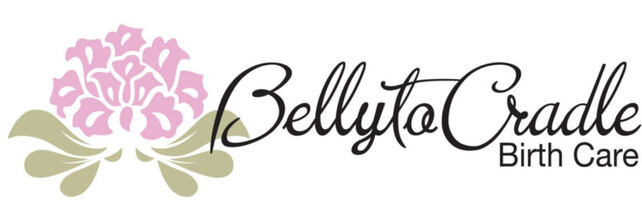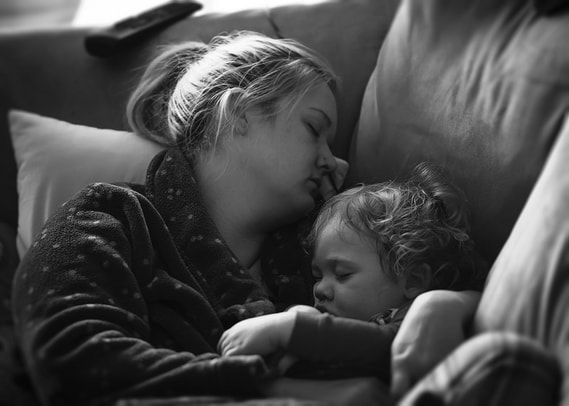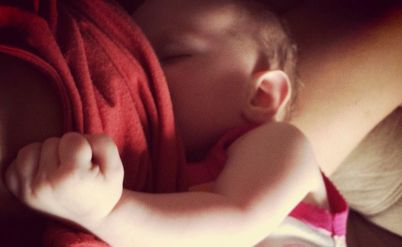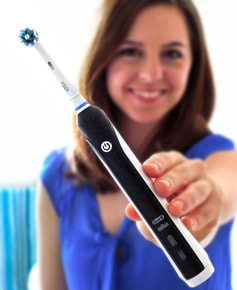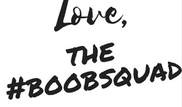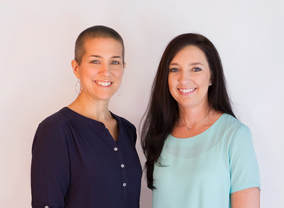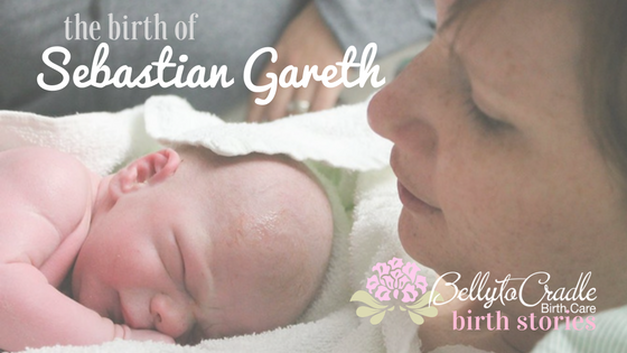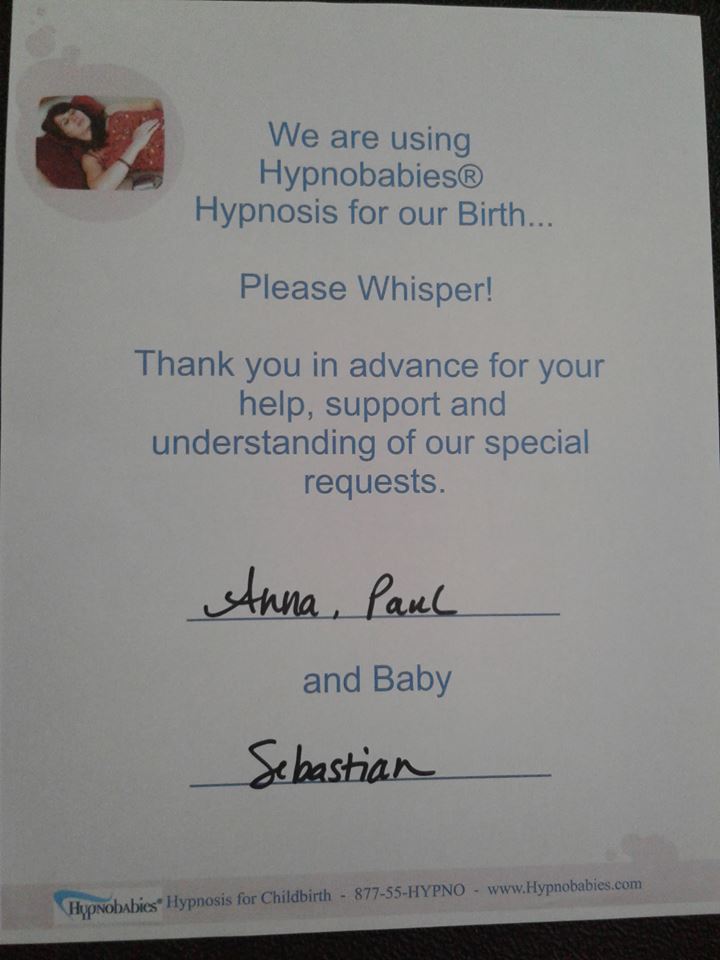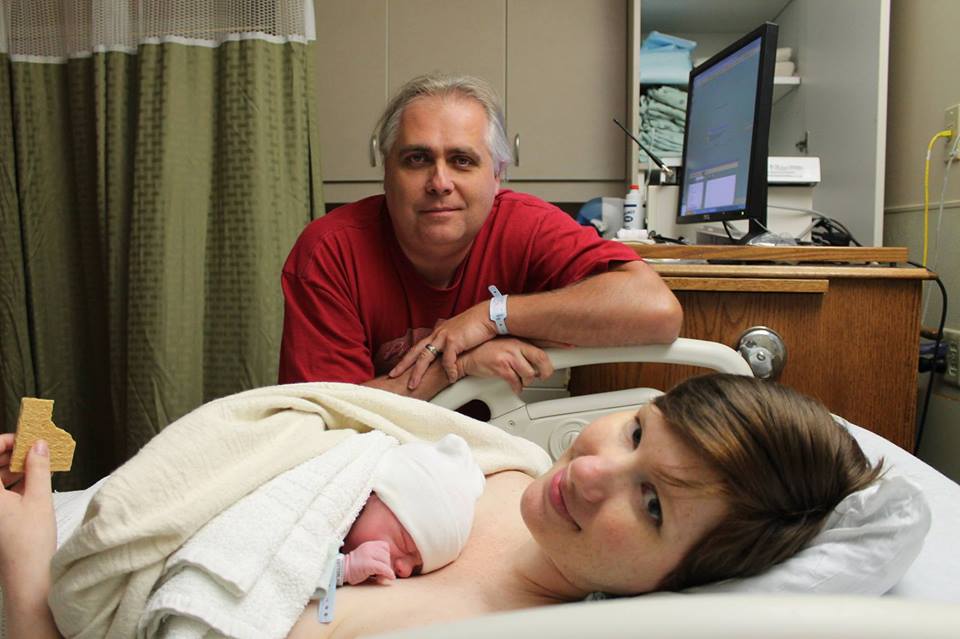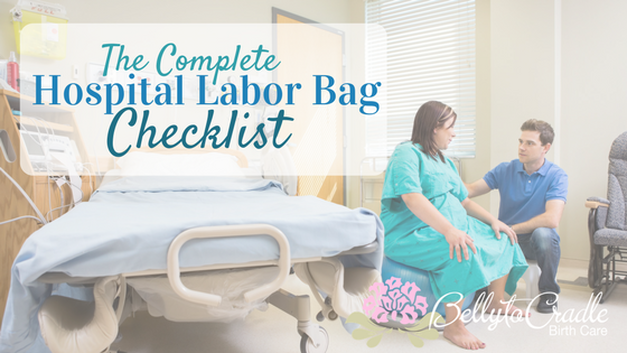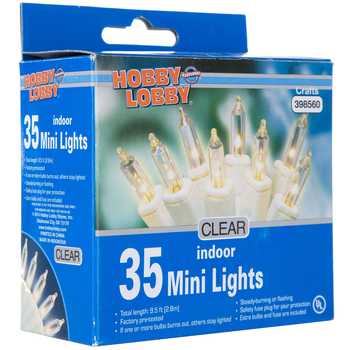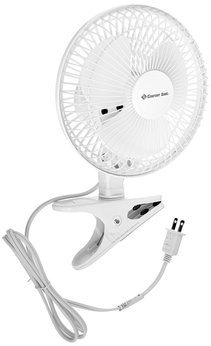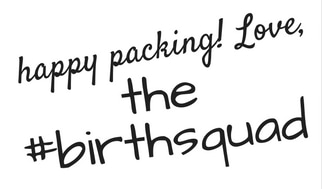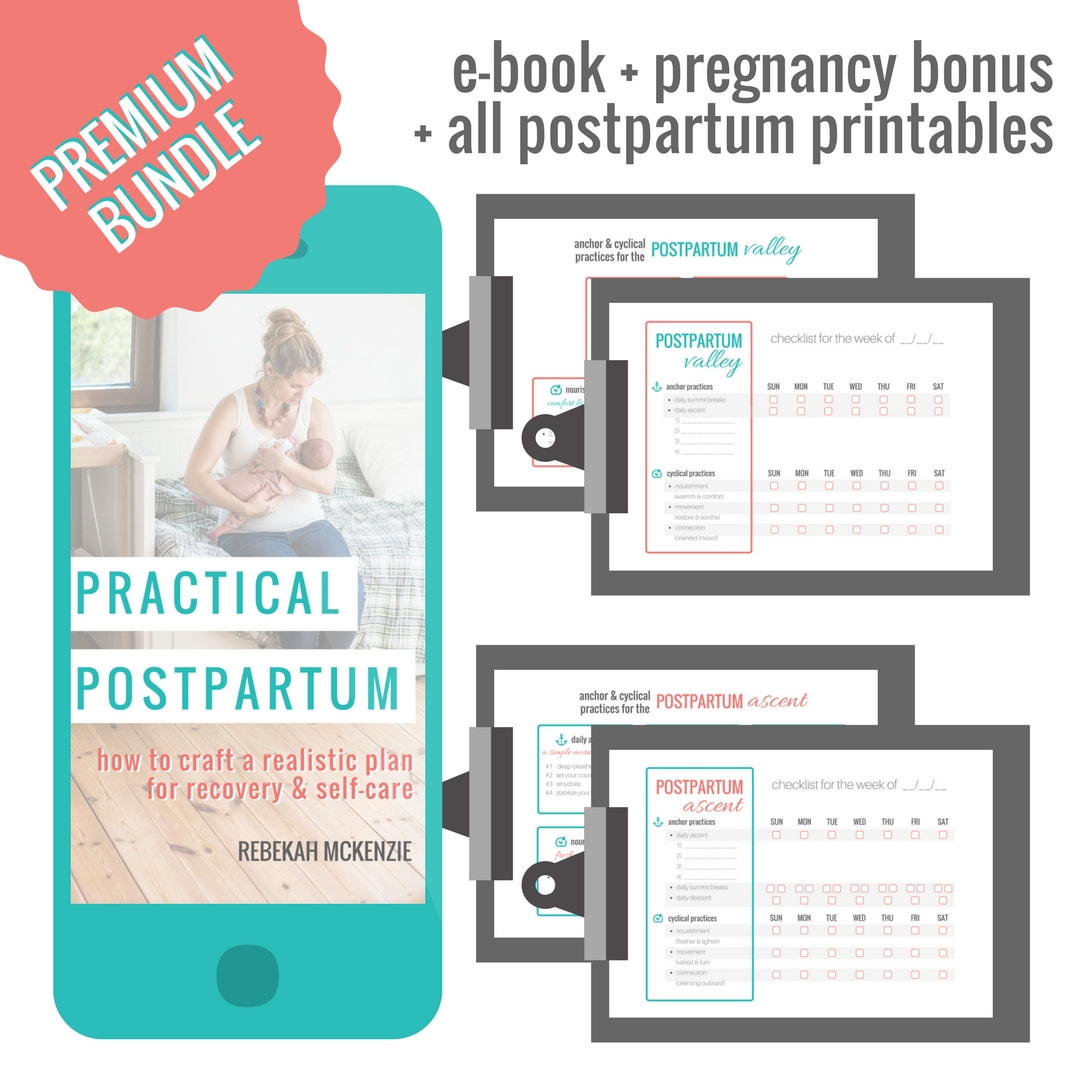|
Have you experienced the “mombie” (mom+zombie) state yet? You’re so tired from lack of sleep that you feel only barely alive and functional, easily confused and unable to focus. You feel like all you do is feed the baby in the same spit-up stained t-shirt and yoga pants you've worn for two days--or is it three now? You can't find your phone and you can't remember when you actually ate a full meal, had more than three hours of consecutive sleep, or took a shower. Why is it that motherhood is synonymous with sleep loss? There are actually two sets of circumstances surrounding the beginning of motherhood that seem to set the stage for being so dang tired: late pregnancy and early postpartum. At the end of pregnancy, several factors culminate in prenatal insomnia. You may find it difficult to get comfortable during the night. When and if you do get comfortable enough to sleep, you may be disturbed by leg cramps, heartburn, baby kicks, or an increased need to urinate. Additionally, you may find that once you’re settling in and powering down to sleep, your mind kicks into gear with all the nesting tasks you have left to complete and maybe even anxieties surrounding giving birth or those newborn weeks. Just after the birth of your baby, another set of circumstances emerges to cause the sleep deprivation for which early postpartum is so infamous. The most obvious factor is your baby waking you up, needing to feed or have a diaper change. This is partly due to your baby’s tiny stomach capacity and innate need to feed often, but it’s also due to the fact that your baby’s circadian rhythm (the sleep-wake cycle) hasn’t yet calibrated to match that of the other earthlings in your household. Baby is still used to being awake at random times in the darkness of your womb and isn’t accustomed to, or even capable of, sleeping for long stretches of time in the dark hours. And if you’re worried about baby’s health and safety, that can also contribute to poor sleep quality. So, what can we do? While knowing the causes of sleep loss can be helpful, let’s bridge the gap and cover some helpful tools. Some of these tools are in the category of prevention: keeping the causes of sleep loss at bay (or from occurring at all). Others are in the category of coping: acknowledging that “it is what it is” and taking some action to mitigate the effect of sleep loss. Preventing and Coping with Sleep Loss:
1 Comment
All over the world, moms are celebrating World Breastfeeding Week, some even honoring the event with traditions like the Global Big Latch On in some communities (come see us at the Global Big Latch on of Escambia & Santa Rosa Counties). In honor of this week, we are keeping it real. It seems like the minute you announce your pregnancy, the advice starts to pour in from all directions--not just for pregnancy and birth, but for breastfeeding too. From "Don't eat broccoli or asparagus, it will give the baby gas," to "Never wake a sleeping baby to eat!" we are sure you've heard all the strange (and not-so-great) suggestions there are out there. And while there are some strange pieces of advice that are also mythical, there are also some strange pieces of advice that can be very, VERY helpful and real. #1: Give the ladies air time. Yes, we are suggesting you go topless once in a while. Letting your twins free while you're breastfeeding can be a very important part of the process--not only because your nipples are not accustomed to friction for 8 hours a day at first, and fabric against them can feel like rubbing shards of glass on them as they heal from any initial damage, but also because wearing a bra or shirt 24/7 can promote bacterial and fungal growth. Yeast and other bacteria thrives in dark, moist, warm places (aka, your nursing bra), and your breastmilk contains carbohydrates/glucose, which also feeds bacteria and fungi. So by going topless, you are not only giving your nipples time to heal and be more comfortable, but you are also allowing them to stay dry so that you can help avoid a thrush outbreak or other bacterial infection in your milk ducts. Wearing a button up shirt or a robe can facilitate this--hey, you could even just cut some holes in an old t-shirt and be set! Just make sure that you don't forget about your state of dress (or lack thereof) and accidentally answer the door for the UPS man. #2: Strange breastfeeding positions are sometimes the best. One of the most common issues in the early days of breastfeeding, and then later on during changes that can impact supply, are plugged ducts. This is when fat globules in your milk collect in one part of a duct and form a clog in the flow of milk. Many moms feel this as a hard knot that could be anywhere from the size of a marble to a golf ball. When this happens, one of the best ways to work the knot out is to lay your baby flat, and "dangle" your breast over your baby to feed, with the baby's chin against the knot. This allows gravity and the baby's oral movement to work the knot out. (See this position here). Another fantastic breastfeeding position to help clear plugged ducts (or prevent them if you have them happen more than once) is the "over the shoulder" position. Imagine throwing your baby over your shoulder, upside-down, and you've about got the image! In this position, you are laying down on your side or back, and baby is lying with legs literally over your shoulder. (See this position here). These positions aren't just for plugged ducts, though. Switching the position baby feeds in frequently stimulates different parts of the breast, which can increase supply AND help prevent baby from developing a preferred nursing position or side. So, if you've struggled with plugged ducts more than once, or are uncomfortably engorged in the early days, this can be an especially helpful position if you have a very little one. #3: Other Ways to Remove Plugged Ducts. Plugged ducts can be nasty little boogers that are both painful and a precursor to mastitis (an even nastier booger). Thus, our desire to help you remove them as easily as possible, and avoid them in the future. And there is more than one way to fix this problem. The key with removing the clogged ducts is to dissolve the plug of milk fat--and this can require massage, heat or vibration. So, our favorite tools to suggest for plugged duct removal are:
#4: Put that stuff on everything.
This hearkens memories of My Big Fat Greek Wedding where the father of the bride believed that any ailment could be cured by Windex. Well, just switch out Windex for breastmilk and we've got a similar situation going on here. From pink eye, to scratches and cuts, to ear infections, lots of moms are now treating common ailments with a drop or two of anti-body filled breastmilk. In fact, many moms are stashing extra breastmilk in tiny syringes in the freezer just for situations like this. It might sound crazy, but there's lots of evidence that it works!! So, in celebration of World Breastfeeding Week, maybe stash away these "crazy" suggestions for later use--you might need them. And we'd love to hear about any weird or strange breastfeeding suggestions you've been given that have worked for you!  Lydia DeCastra Lydia DeCastra As early as I can remember, my grandmother always said, “it takes a village to raise a child.” Although she usually repeated this proverb to comment on the Jones baby’s outbursts at church on Sunday or to justify disciplining children at the local supermarket, this proverb took on a whole new meaning when I joined the Belly to Cradle team. Today I feel compelled to share some facts that make The Belly to Cradle Team unique in the world of birth care. #1: Diversity of Caregivers Talk about a village! At Belly to Cradle, you can personally choose the caregiver that best meets your desires and needs as a client. With four professional doulas and two board certified lactation consultants all with different backgrounds, personalities, life experiences, certifications, service fees, and all living in different geographic areas within the Greater Pensacola, FL, to Mobile, AL, you the client are more likely to find a caregiver that perfectly suits you and your family’s needs. #2: Continuity of Care When you hire Belly to Cradle, you’re not just hiring your individual birth doula or lactation consultant, you’re actually hiring a whole network--a whole force of knowledgeable, caring, professional women! Because we are a group of women in business together, we as a group are accountable to not only all of our clients but to each other. If due to some disaster or unforeseen circumstance your individual doula or consultant cannot make your appointment or birth, another Belly to Cradle caregiver will be on the way and will be able to seamlessly fill-in at no additional cost. Talk about great insurance! Even more wonderful, is your ability as a mother and a parent to enjoy continuity of care with a business that you trust. Maybe you begin your Belly to Cradle journey by hiring a doula for your first birth and afterwards hire one of our lactation consultants to help your baby establish a better latch. Or maybe you needed some breastfeeding help from a lactation consultant and through your positive experience with Belly to Cradle decide you want to hire a doula for your second birth--however you choose to utilize our care, we are a "one-stop-shop" of caring, collaborative birth professionals. #3: In-Home Care! Going back to the grandma chronicles again; I always remember that dear old woman muttering under her breath about having to get all ‘dolled up’ to go see her various caregivers for appointments. “I remember in the good old days when people used to come to you,” she’d declare. At Belly to Cradle, just like grandma says, ‘we come to you!’ Don’t worry about the 3 day old breast milk sitting on the kitchen counter, laundry in piles on the couch, your toddler’s half consumed juice pouch stuck between the crevices of your couch. We’ve all been there…done that. Don’t stress! You just stay in your yoga pants and an old t-shirt and let us take care of the rest. #4: Invaluable Connections and Local Resources Belly to Cradle has been serving the greater Pensacola, FL area since 2011 and we have worked very hard to build and maintain a strong, professional reputation within the medical and birth communities in the local area. As our client, you will have access to countless resources during and after your pregnancy to chiropractors, photographers, midwives, massage therapists, many of which Belly to Cradle has a close, established working relationship with. In addition, depending on the additional service that you need, you may qualify for a discount of 10-20% off services with some of Belly to Cradle’s preferred business partners listed on our website. #5: Alternative Payment Options We understand that having a baby is expensive--and the thought of spending more than you absolutely need to for the cost of your care can be overwhelming. So, we offer various different payment methods and rates. Aside from offering a military discount to clients, our Gift Registry allows loved ones and friends to give you the invaluable gift of pregnancy, labor, and postpartum support by gifting contributions toward your balance with us. We also are willing to put your doula care payments on ‘layaway’ if you are not able to pay in full for services. We will work with your unique financial situation and will keep an account of payments made via our convenient and easy Payment Portal. While we can't currently take insurance payments, we ARE approved to accept HSA and FSA cards as payment for any service that we provide. Now that’s something to get excited about! #6: The Belly to Cradle Family
At Belly to Cradle our relationship with you and your family does not end after your final prenatal appointment with your doula or your last house visit from your lactation consultant. We stay in touch and will get you in touch with other local Belly to Cradle moms and families through Facebook groups, local events, and Belly to Cradle hosted mommy- baby get-togethers. You will be part of our Belly to Cradle Family. Birth is transformative. Ordinary women blossom into mothers, ordinary men become fathers…and the family takes root. Whether this is your first birth or your tenth, the process is messy, chaotic, unpredictable, but yet so incredibly beautiful. And we, the women of Belly to Cradle, LLC can’t wait to squat, push, and latch with you on the road to a happy, healthy birth and family experience! To prepare for Sebastian’s birth I practiced Hypnobabies homestudy course from about 26 weeks until he was born. The terminology in this story is a little different with “waves” being used in place of “contractions”. Because my first baby was a 42 week induction, as my due date neared I started “natural” techniques to try to jumpstart labor, and I was happy to hear at my office visits that I was having cervical changes that I had never had with the previous pregnancy. My due date however came and went without a baby so I started doing even more home induction techniques to try to get things going. On the 20th I did a few minutes of nipple stimulation which set up regular painless pressure waves that continued every 3-5 minutes throughout the day. I went and had my first ever acupuncture visit and went home truly expecting to have my baby in my arms before midnight. The waves continued to come regularly for about half the night and then unfortunately fizzled out. The next morning my husband accompanied me to my 41 week pre-natal appointment where it was discovered that my blood pressure was elevated quite a bit and because of that, in addition to my very favorable cervix (dilated to a 4 and 70%) (and my insistence that I was OVER being pregnant) my midwife agreed to an induction that day. The induction was by nipple stimulation which worked really well to start regular pressure waves every 3-5 minutes, however I had to keep the stimulation up or they would peter out. After 4 or 5 hours of this, my midwife checked me and found that I was 5cm and 80% so she gave me the choice of continuing as we were doing or she could break my water. I chose to have the water broken. There was heavy meconium in the fluid which made me really upset and I was trembling uncontrollably, but Amber used one of my Hypnobabies cues to help me calm down. After my water was broken, I still needed to either be up and walking around or doing nipple stimulation to keep the waves coming steadily, but they were apparently growing in intensity. I was still very comfortable, no pain, just tightness of my abdomen during the pressure waves. I labored in the bathtub for a while, but really didn’t find this to be that relaxing, so I chose to do most of the rest of my later labor sitting in bed. At some point I was checked again and found to be at a 9. I was so excited because I was about to meet my baby! The midwife left me to labor for a while longer, checking back periodically to ask if I felt “pushy” or “different” and the answer was always “no”. After several hours of this, she asked if she could check my progress and said I was still dilated to a 9 and she felt that the baby was a little tilted and therefore was not making the progress we wanted. She recommended I labor on my side for a little bit. This I found to be really painful for my pelvis (I had symphysis pubis pain my entire pregnancy) so we switched to laboring on the birth ball for a little while. It was while on the birth ball I started to actually experience pain with my contractions because I couldn’t really use my hypnobabies relaxation tools in that position. I don’t know how long I stayed on the birth ball, but I eventually said I had to move and we went back to the bed.
Even though I was still dilated to a 9 and not feeling the urge to push, the mid-wife suggested she would like me to try a practice push. I did, and suddenly there was a flurry in the room because baby started to crown with that push! I then REALLY had the urge to push and after two more totally involuntary pushes Sebastian was born! He was placed on my abdomen because his cord was very short. After a few minutes my husband cut the cord and they brought baby to my chest. We had 10-15 minutes of skin to skin time while the placenta was delivered and a few stitches were put in (the same area I tore the first birth re-opened). It was a beautiful and peaceful birth. Probably one of the the most common question we get from clients and see on mommy group threads is "What should I pack in my hospital bag?" So we decided we would not only poll our own clients to find out what their favorite must-haves were, but we also decided to share our very own recommendations via the printable PDF checklist we usually only share with clients! (It's at the end of this post.) The Hygenic Stuff. Believe it or not, Depends (yes, the adult incontinence garments) are top on the list of labor and postpartum must-haves. Of course, don't forget the other stuff--like your own soap, shampoo, grooming tools (do NOT forget your brush and hair ties!) and maybe a touch of makeup to make you feel human, but our clients LOVE Depends--specifically the Silhouettes brand which come in black, nude, and even purple. They are discreet, don't leak, and can just be tossed after use, reducing the amount of dirty laundry you have to take home with you! They also don't bunch up or press on the sensitive lady parts like pads do. (When Amber saw them at a recent birth she *almost* swore off underwear all together in favor of these things). Another top must-have is chapstick. "I remember my lips being so dry when I was breathing through contractions," our client Melissa says, so maybe toss a few tubes in your bag. The Electronic Stuff. In the Information Age, electronics are now a necessity, especially at a time like the birth of your child. After all, your family might die of FOMO (Fear of Missing Out) without your labor Snapchats, and you might want to Facebook Live yourself dancing in labor in an effort to go viral. And you HAVE to have a camera to take a TON of pictures, right? "My laptop was gold," Anna says. "We used it to watch movies and shows in early labor to keep us distracted." Also, a Bluetooth speaker is a great way to play your labor playlist. But don't forget all the requisite chargers for all your separate electronic items. Loryn suggests bringing a LONG charger cord or cordless charger in case the hospital outlets aren't conveniently located. "I never had a cord long enough to reach my bed in the middle of the night when I was nursing and needed my phone," she remembers. The Environmental Stuff. If you've hired a doula, it's likely she will help you set up your labor space with lighting and music, but you can take that same labor vibe into your postpartum room using things like ambient lights and fans. "Take a small lamp," Chelsey recommends, "so you don't have to turn on the overhead light for middle of the night changes, and it's just more relaxing in the evening." Anyone who has birthed with us knows our absolute favorite must-have is a strand of white Christmas lights. "We brought [a strand of] lights and after delivery we put them up in the recovery room," Lauren says. "It was glorious and kept the room cozy and calm." We love strands of lights because they add just enough light to the room at night to see what you're doing without disrupting sleep. We recommend a 20-35 bulb strand so it doesn't get too bright--Hobby Lobby & Walmart both carry them in the wedding section. Consider getting a strand for the room and one for the bathroom to keep the lighting dim and constant. This is SO important during birth and postpartum since bright lighting can disrupt the production of melatonin which contributes to the production of oxytocin, a hormone essential for labor, birth, and breastfeeding. Also, the hormones associated with labor and birth can make your body temperature during labor and postpartum shift from hot to cold at a moments' notice, and you may have little or no control over the room temperature, so a small clip-on or table top fan that you can easily move wherever you do is also a must-have. The Clothing. It's totally easy to over pack on the clothing front. Our recommendation is to keep it simple and pack a few really comfortable, loose, easy-to-layer clothing items that are also easy to put on and take off. You may still have quite the baby bump even post-baby so don't pack anything that you are even slightly doubtful you will fit into. For labor, consider that you may be dealing with the cords involved with an IV, epidural, and monitors, so you may need to pack even less if you choose to use the hospital gown. There are plenty of options for buying your own, prettier, labor gown (like Pretty Pushers, which are sold locally by ShoMe Prenatal Imaging, or the ones carried by Latched Mama), but some moms may want to save those to change into after the birth so they don't get icky and messy during the birth process. Loryn says that she brought her own lightweight robe. "It made nursing super easy and it was quick to close when visitors came by. It also made those 15-minute-long bathroom visits easy to manage." Don't forget to pack clothing for your partner and the baby, but once again, keep it simple--two or three changes of clothing are usually enough. You aren't packing for a week-long cruise to the Bahamas, after all (although I am sure all moms everywhere wish this were the case). The Linens. It's so nice to use the hospital linens during the birth process, not only because you may go through fourteen sheets and sixty-five towels in between trips back and forth from the bathtub to the bed, but also because (like the hospital gown) you just don't have to worry about all those bodily fluids ruining your favorite pillow or blanket. BUT sometimes, a familiar bedding item can really help increase your oxytocin levels (sensory input is also a necessary part of labor efficiency) and just make your room more comfy. For labor, we suggest one or two favorite bedding items that you wouldn't be distraught over if they got doused in amniotic fluid. But for postpartum, bringing your own pillow, blanket, and towel can be really helpful. "Those hospital towels = sandpaper and doll-sized," Anna comments. The Stuff You DON'T Need to Bring. While this list might seem sort of long, and even exhaustive (after we said to keep it simple!) there are actually things you really DON'T need to bring to the hospital. It's always a good idea to check ahead of time with your birth place to avoid making assumptions, but in our experience, hospitals usually provide:
|
This is us.We are Women. We are Moms. We are here to help your family blossom. Archives
September 2019
Search
All
|
Building 4
Pensacola, Florida, 32504
We proudly provide
Childbirth Education, Placenta Encapsulation, Lactation Consultations & Doulas
in Pensacola, Milton, Pace, Gulf Breeze, Navarre, Crestview, Ft. Walton, Florida.
Copyright 2017, Belly to Cradle, LLC.
Photo Credits: Kayla Reeder Photography, Lynette Sanders Motherhood Photography,
Savanna Morgret Photography, Finding Beauty in the Ordinary Photography,
& New Light Birth Photography
|
|
